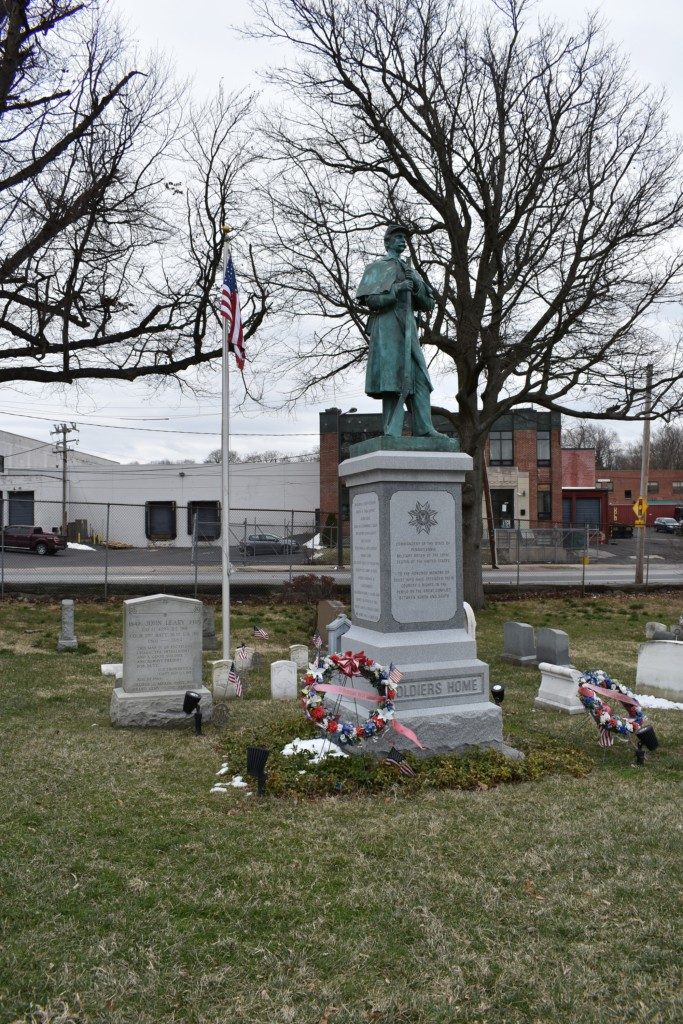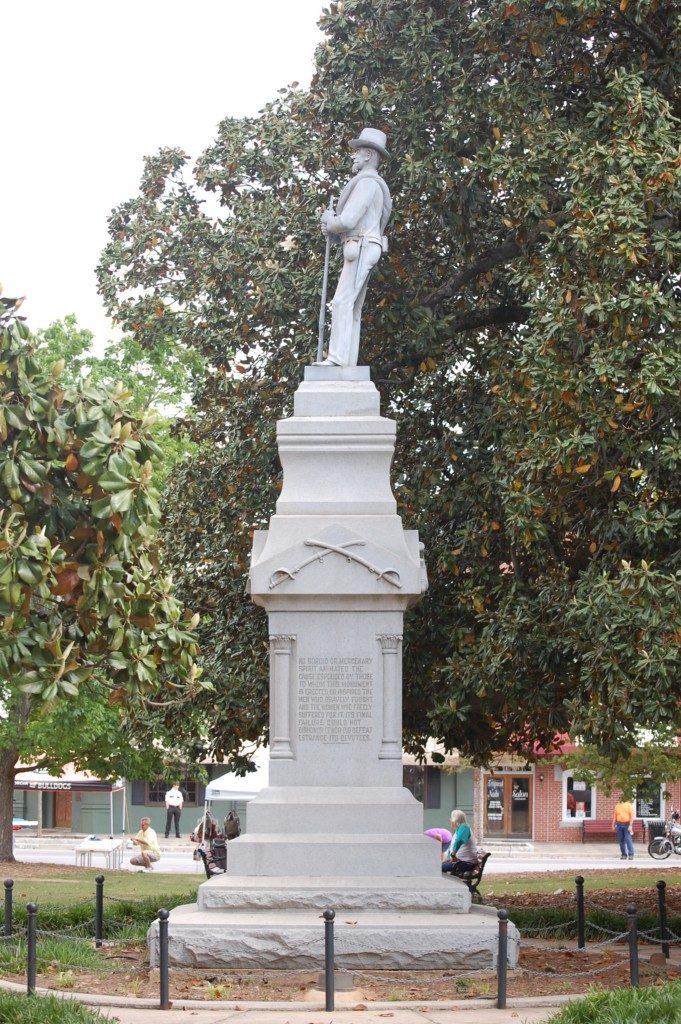Confederate Monuments and the Inevitable Forces of Change

In Laurel Hill Cemetery in Philadelphia, there is a Union soldier monument that did not originally belong there (fig. 1). First sited in Mount Moriah Cemetery on the other side of town, the statue went into hiding in the 1970s after thieves removed it from its base and attempted to sell it to a Camden scrap dealer. It was resurrected at Laurel Hill on a new granite plinth in 2014, and the relocation has been lauded in local newspapers and greeted with celebration by community members and reenactors.1 This is not an abnormal event in the life cycle of public monuments, which exist outdoors in public space and are subject to the forces of public opinion, historical revisionism, convenience, and weather. Contrary to popular perception, monuments are not immutable or unchanging edifices; instead, there can be adjustments and adaptations according to the circumstances of their environments.
This fundamental truth has been missing from the current debate surrounding the future of Confederate monuments and other statues that no longer align with community values. Some arguments have equated altering a monument with erasing or forgetting history. Others have hinged on maintaining the memorial landscape as it stands at all costs, in order to allow future generations to experience historical works of public sculpture as they were originally intended. But it is unrealistic to require a community to live entirely within the physical world of the past. Population sizes fluctuate over time, and cities flourish or diminish with them. New transportation and sanitation technologies require updates to urban infrastructure. Values change, and public spaces change with them. Sometimes, the monument must change too.

Civil War monuments, from both the North and South, have been subject to constant alteration in meaning and material circumstances. Exposed to the rain and snow, they are at the mercy of weather conditions. Bronze loses its luster, zinc “creeps,” and stone crumbles (fig. 2).2 Monuments have been the targets of acts of vandalism and iconoclasm, relocation for political and practical purposes, reinterpretation with the addition of new works of art or text, and random damage from accidents or weather. Placed along major thoroughfares, these works are also easy targets for car accidents. Recently, the alteration of Confederate monuments has been the subject of national debate, but monumental change is usually a local affair. Public spaces are reconfigured to make room for new construction. New works of public art are placed in dialogue with existing statues, subtly shifting their meaning even if the juxtaposition is unintentional. Vandalism and accidental damage are repaired, and conservators are called to assess the effects of neglect. All of these processes are common occurrences within the material history of monuments.
It would be ideal for individuals on both sides of the Confederate statue debate to recognize that monumental change is inevitable. Responses to the current crisis should rely not on defending the supposed inviolability of the monument, but on tracing the latest developments within this long timeline of monumental change. Removing the requirement of permanence allows for a more measured approach to the present and future of Confederate monuments. Strategies might include recontextualization through new text, commissioning new monuments, relocation to less prominent spaces, or total removal. Once the inevitability of change is understood, it will be possible to strike a balance between preserving the historical record and building public spaces that reflect inclusive values.
Cite this article: Sarah Beetham, “Bully Pulpit: Confederate Monuments and the Inevitable Forces of Change,” Panorama: Journal of the Association of Historians of American Art 4, no. 1 (Spring 2018), https://doi.org/10.24926/24716839.1636.
- Edward Colimore, “Rescued ‘Silent Sentinel’ Civil War statue going to Laurel Hill Cemetery,” Philadelphia Inquirer, May 23, 2013. ↵
- In the treatment of zinc monuments, creep refers to the permanent deformation of the metal over time due to expanding and contracting with changes in weather. Creep may cause seams to separate, panels to bulge, and statues to lean precariously. For more on the history of zinc sculpture, see Carol Grissom, Zinc Sculpture in America, 1850–1950 (Newark: University of Delaware Press, 2009). ↵
About the Author(s): Sarah Beetham is Assistant Professor of Art History at the Pennsylvania Academy of the Fine Arts.

